Last-Minute NYC Holiday Gift Guide 🎁
We’ve created a holiday gift guide with presents for the intrepid New Yorker that should arrive just in time—

Untapped Cities is an official blog ambassador for Partners in Preservation , a community-based initiative by American Express and the National Trust for Historic Preservation to raise awareness of the importance of historic places. For complete coverage, follow our Partners in Preservation category.
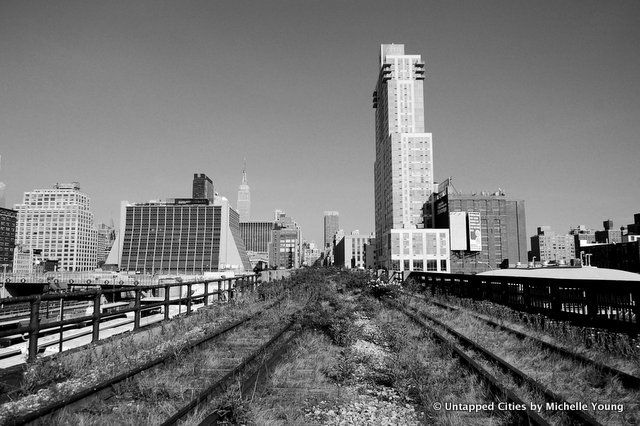
Section 2 of the High Line may have opened to great fanfare last year, but at Untapped we want to show you what’s still left to be converted: Section 3, along Hudson Yards. For a while, its future remained uncertain. In 2011, the section wasn’t owned by the city yet–which meant it could still have been demolished. But by March of 2012, plans for the section 3 of the High Line were unveiled and everyone collectively breathed a sigh of relief.
Section 3 of the High Line is one of the 40 locations in this year’s Partners for Preservation, a community-based initiative by American Express and the National Trust for Historic Preservation to raise awareness of the importance of historic places. As New York City’s first-ever citywide grassroots preservation effort, the call-to-action program will enlist the aid of all New Yorkers, and anyone who loves New York, to vote online to allocate $3 million dollars to the preservation projects most important to them.
The Friends of the High Line are looking for funds to restore the original railway tracks on the eastern section of Section 3. The tracks would be temporarily removed (but kept on site), remediated, and some sections would be reinstalled in their original location as integrated elements of the forthcoming design by James Corner Architects and Diller Scofidio + Renfro.
In the concrete jungle that is New York, it’s surprising to see nature in its chaotic, uncontrolled form. Of course, James Corner and the other landscape architects worked in the natural flora with their design for the completed portions of the High Line. But here in Section 3, there’s still a true sense of discovery embedded: the unexpected nature of the path as we climbed around massive bushes and wooden planks, the one small evergreen tree flourishing in the midst, the palpable layering of nature over the man-made, and the undeniable importance of the railroad woven into the story of New York. Maybe it was the nature of being in a little-explored space, but with the backdrop of Hudson Yards, we felt inserted into the trajectories of history.
The end of the line where the tracks disappear:
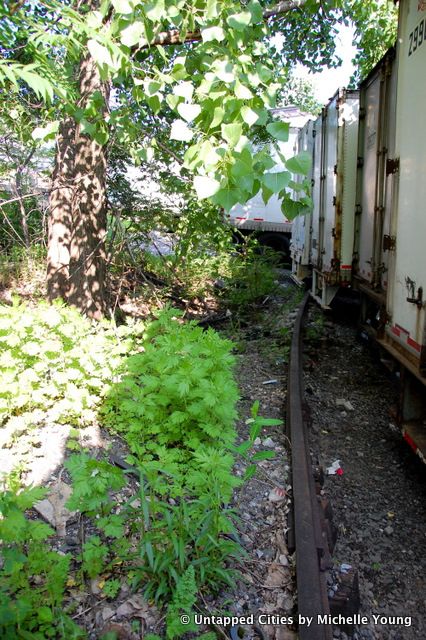
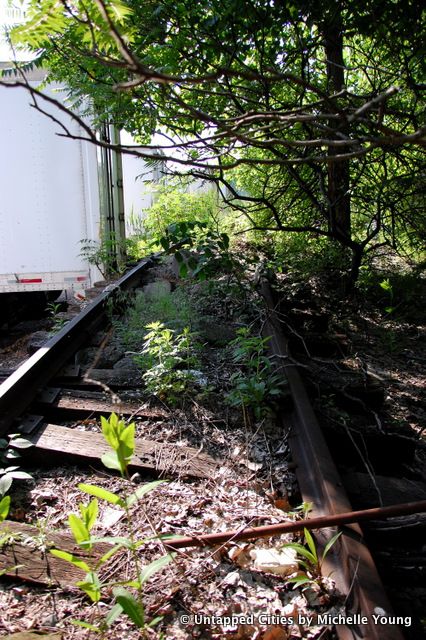
A glimpse through the brush:
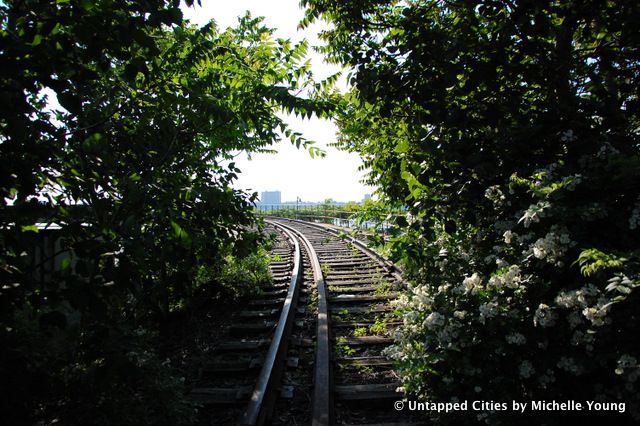
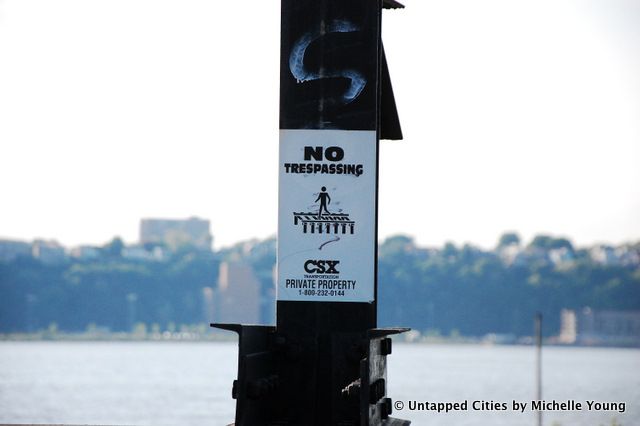
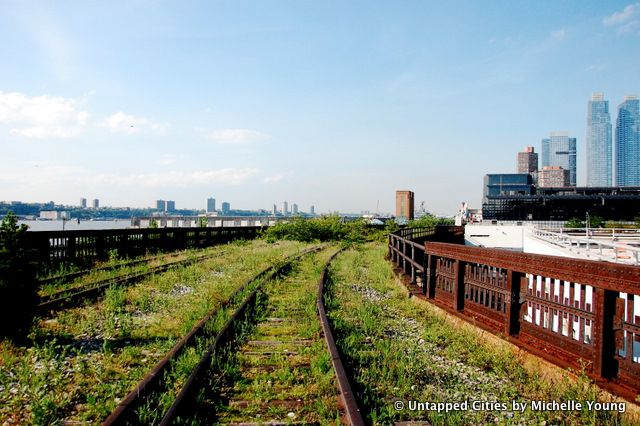
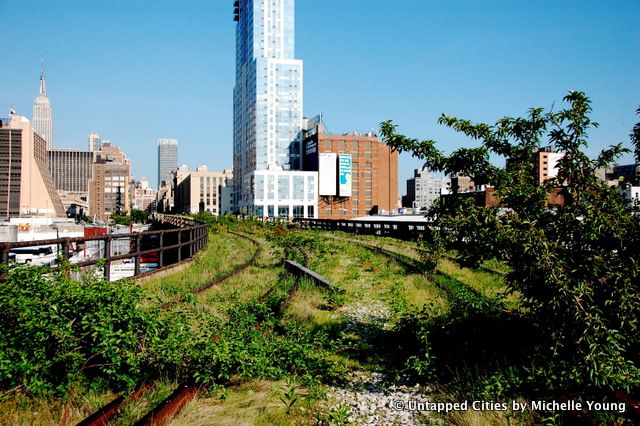
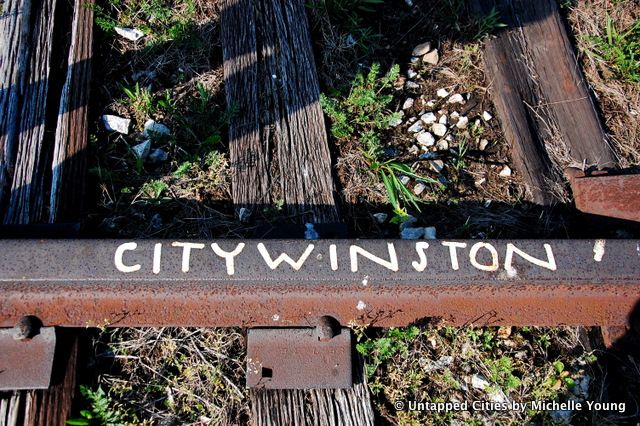
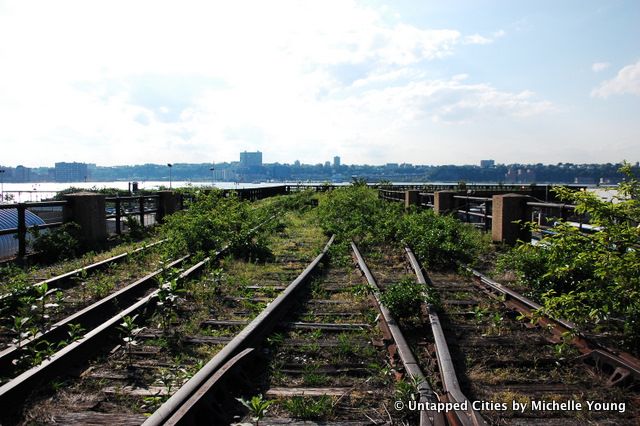
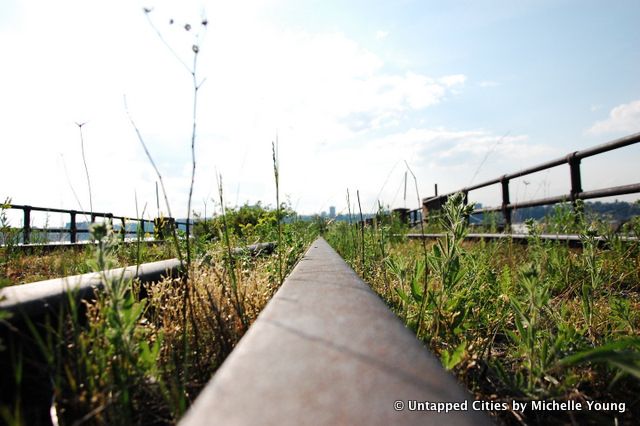
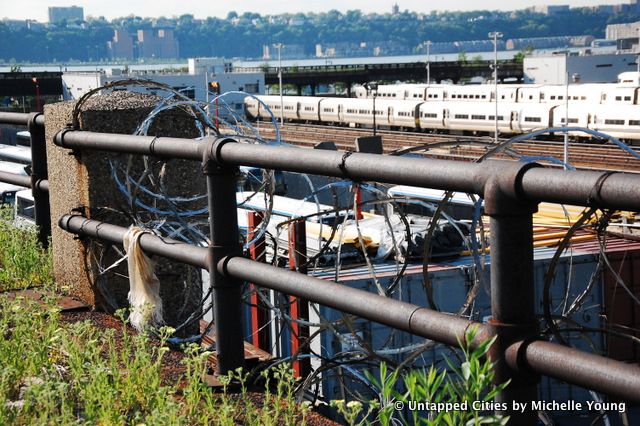
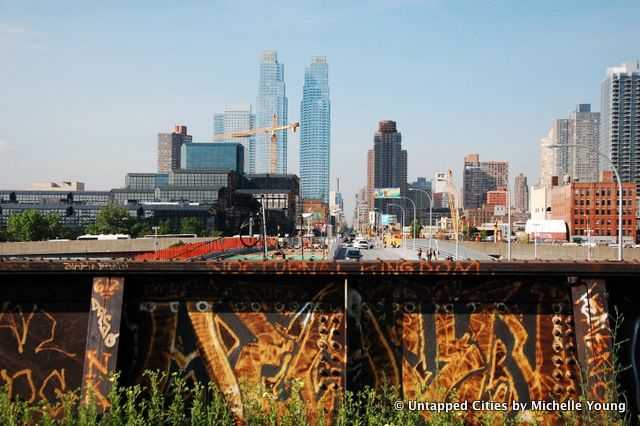
Due to all the overgrowth and decay, it’s not surprising the restoration is tricky. The decline and eventual stoppage of all traffic has resulted in significantly deteriorated conditions at the rail yards. Many of the rails and rail hardware are heavily rusted, while the original ties have degraded. Preparatory work for rail track restoration, including surveys of the tracks, began in spring 2012. Grant funds would then support removal of over 100 tons of steel tracks, which will be stored and remediated on-site. Grant funds would also then support remediation; sandblasting would remove rust, paint, and other contaminants from the steel, and other abatements will take place to remove asbestos-containing mastic. Finally, grant funds would support reinstallation of selected tracks back into the structure, with new ties for tracks integrated into their original locations in newly created planting landscapes; other tracks will be inlaid into the walking path itself, again in their original positions.
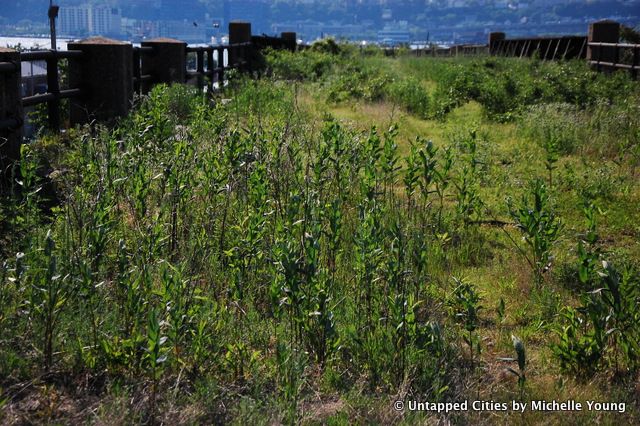
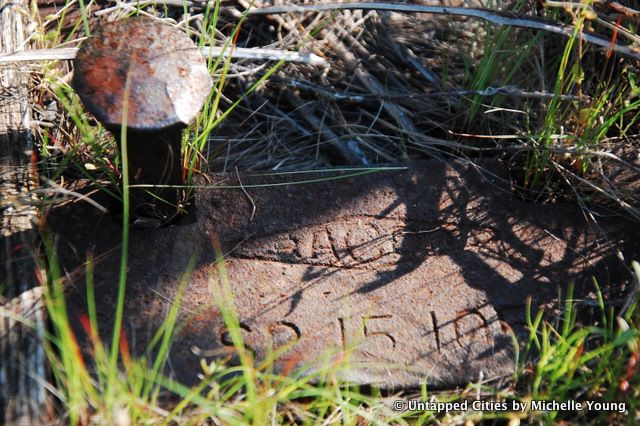
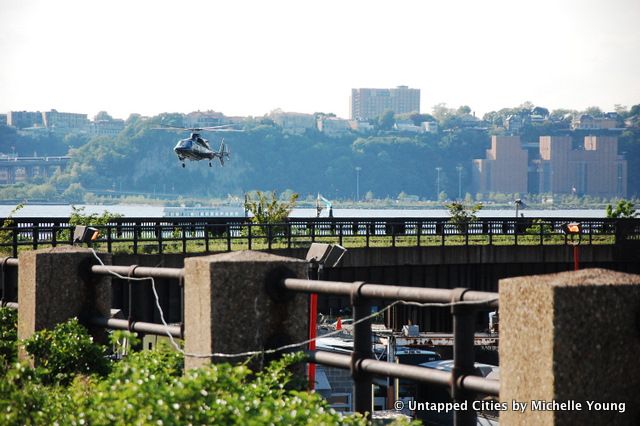
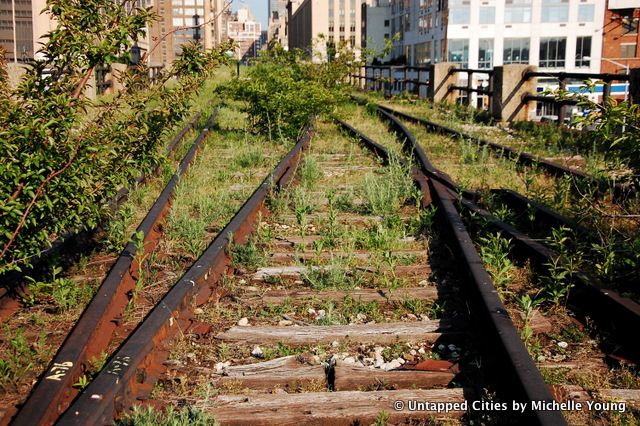
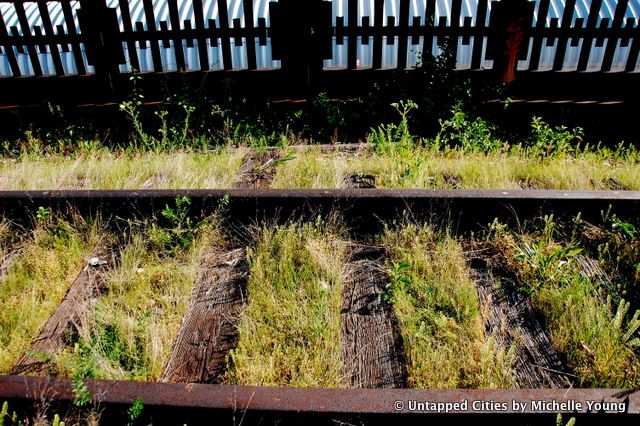
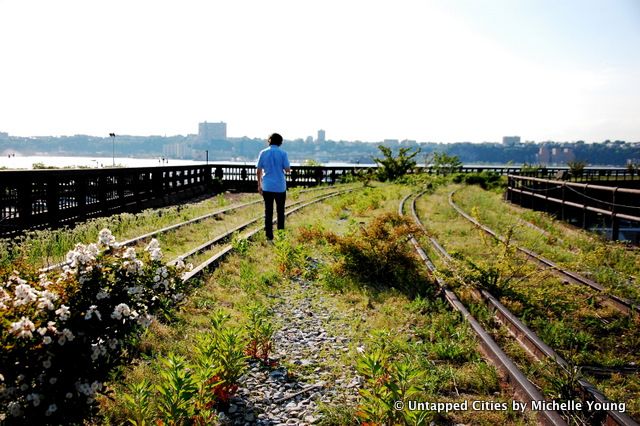
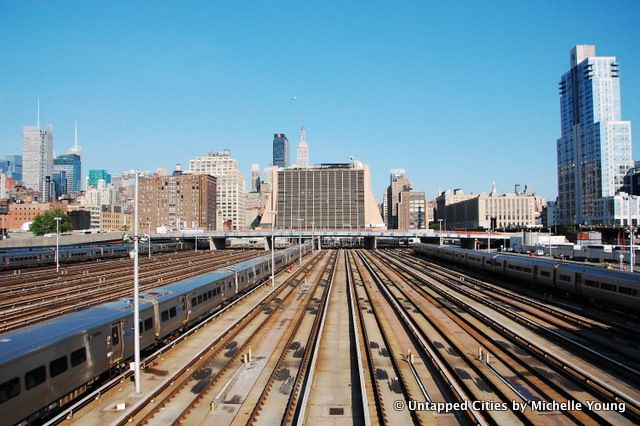
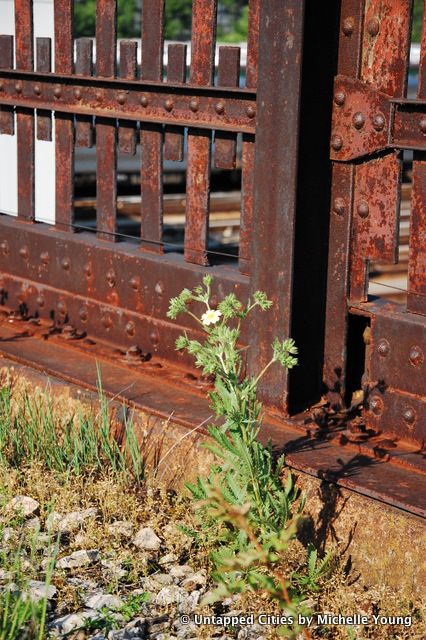
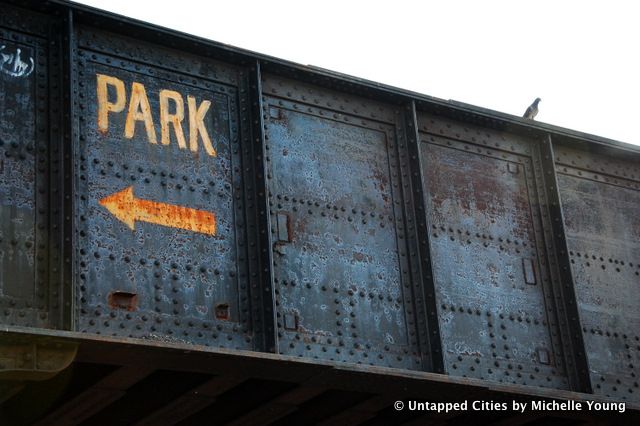
Click here to vote for the High Line, and find out more about the High Line @highlinenyc and Facebook.
Get in touch with the author @untappedmich.
Subscribe to our newsletter